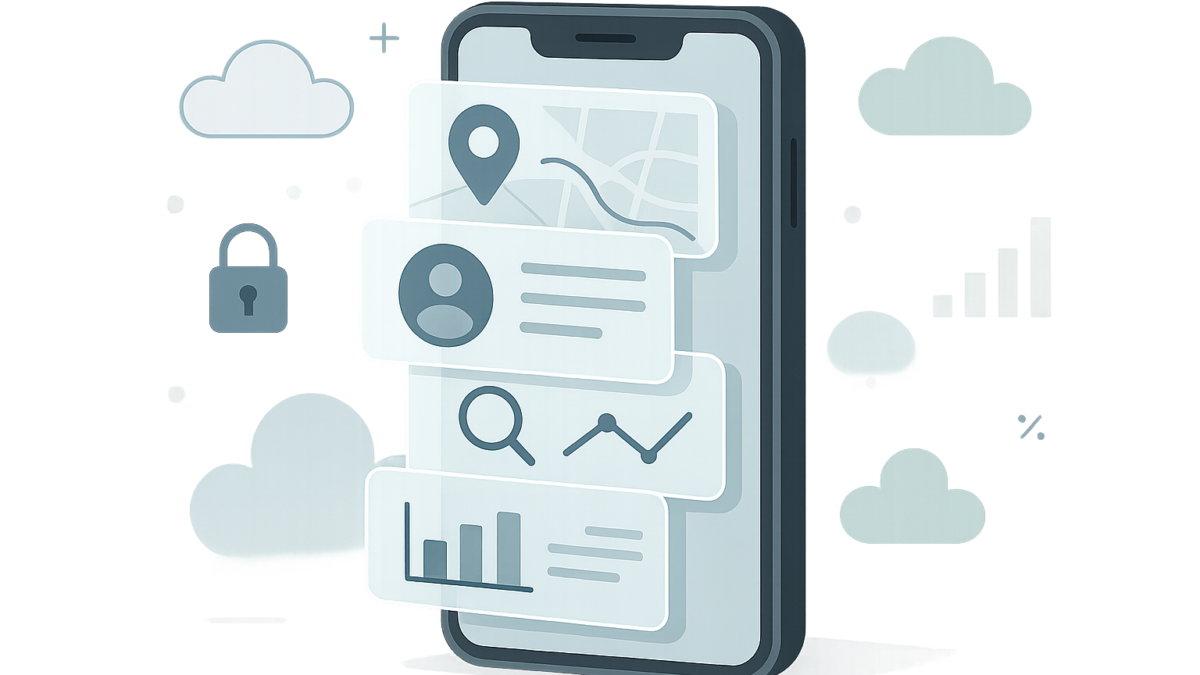How Apps Collect Your Data — And Why It’s Not Always a Bad Thing
Table of Contents
Introduction
In the digital age, data is the new currency. Every app you install, every feature you use, and every scroll you make contributes to a growing pool of personal information. Most users are aware that their data is being collected in some form, but few truly understand the extent of it—or the reasons behind it.
While the phrase “data collection” often triggers concern or mistrust, it is important to recognize that not all data gathering is inherently negative. In fact, when done transparently and ethically, data collection can significantly enhance user experience, improve product functionality, and even protect users from digital threats.
This article breaks down how apps collect your data, what they use it for, and how it can work to your advantage—provided you remain aware and in control.
How Apps Collect Your Data
When you download and start using an app, it often requests access to various parts of your device or personal information. These permissions vary depending on the app’s function, but here are some common forms of data collection:
- Device and Usage Data: Apps collect basic information such as your device type, operating system, screen size, and battery level. They also track how often you use the app, how long you stay on it, and what features you interact with most.
- Location Tracking: Many apps request access to your location—sometimes for essential functions like navigation or delivery services, and other times for targeted advertising or analytics.
- Behavioral and Preference Data: Apps can monitor your behavior, such as scrolling patterns, purchase history, time of usage, and the type of content you engage with. This data is often used to personalize recommendations or improve app design.
- Contact and Calendar Access: Certain apps ask for access to your contacts or calendar to help schedule meetings, send invites, or recommend connections.
- Audio and Visual Data: Social, camera, and AR-based apps may request access to your microphone and camera. While these permissions are necessary for some features, they can also be misused if not monitored.
What This Data Is Used For
Once collected, data can be processed and analyzed to serve multiple purposes, including but not limited to:
- Personalization: One of the most beneficial uses of data is personalization. Streaming platforms, e-commerce apps, and content aggregators use your browsing history and preferences to recommend relevant content or products.
- Performance Optimization: By analyzing usage patterns, developers can identify bugs, slow-loading features, or high-exit pages. This helps improve app performance and user satisfaction.
- Targeted Advertising: Ads tailored to your interests are more effective than generic promotions. Data-driven ad targeting allows businesses to reach the right audience at the right time, often resulting in better ROI for advertisers and more relevant ads for users.
- Fraud Detection: Financial and fintech apps use behavioral data to detect suspicious activity. For example, if you suddenly log in from a new country or make an unusual transaction, the system can flag or block it for your protection.
- Product Development: User data helps companies refine their products, test new features, and make informed decisions based on real-world usage rather than assumptions.
Why Data Collection Isn’t Always Bad
Despite the headlines around surveillance and privacy violations, data collection—when managed responsibly—can be highly beneficial. Personalized recommendations can save time and enhance convenience. Real-time updates based on location or usage patterns can increase productivity. In the health and wellness space, data collected from wearables can offer insights that improve lifestyle and even detect early signs of illness.
In many ways, the digital experience we expect today—from intuitive interfaces to seamless transactions—would not be possible without data.
How to Stay Aware and in Control
While data collection can enhance user experience, it’s essential to remain vigilant and proactive in managing your digital footprint. Here are some practical steps to help you stay in control:
- Review App Permissions: Regularly check the permissions granted to each app on your device. Revoke access to any features that are not essential to the app’s function.
- Understand Privacy Policies: While often overlooked, privacy policies can reveal how your data is collected, used, and shared. Focus on key sections like data sharing practices and third-party involvement.
- Limit Background Activity: Some apps collect data even when not actively in use. Disable background data access for apps that do not need it.
- Use Privacy Settings: Most modern apps now offer detailed privacy settings. Take advantage of these options to customize how your data is handled.
- Clear App Cache and Data: Clearing cache and stored data can remove outdated or unnecessary personal information from the app’s local storage.
- Prefer Apps with Transparent Practices: Support apps and services that clearly disclose their data practices and offer opt-out options for tracking or personalization.
Conclusion
App-based data collection is an integral part of the digital ecosystem. When executed ethically, it allows for improved functionality, greater personalization, and enhanced security. The key lies in transparency, user control, and informed consent.
As users, the responsibility also falls on us to stay informed, question unnecessary permissions, and choose tools that respect our digital rights. By striking the right balance, we can enjoy smarter, more intuitive technology without sacrificing privacy.
You May Also Like: Holographic Displays Are Real Now—And They’ll Change How You Work





